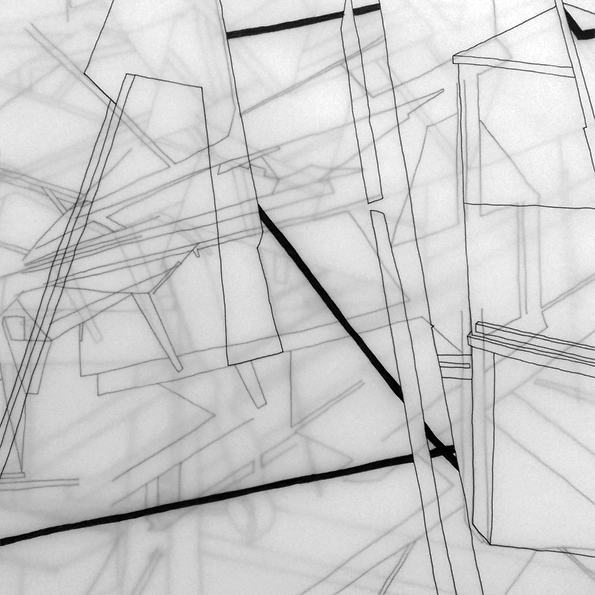
Easter fun at the museums!
Exhibitions, trails and activities; six fun things for all the family to enjoy at The Beaney and...
Much like Malevich’s paintings or his sculptural Architektons, my own work also uses its own visual grammar, or language, of minimal colour and basic geometries. Each specific form doesn’t have a definitive definition, but is read in relation to the other components presented alongside it. In this sense, each component has a nature of interchangeability, one of fluidity, allowing it to be understood in an infinite number of non-specific ways; art in a continuous state of flux, perceptions continually shifting. Arguably, like Malevich, I too am attempting to present a new reality, one that is born from information taken from the present. Or, one that is born from information gathered from my residency at The Beaney. My language has developed through continuous use, streamlined, and assimilated more information in the process before it is used again and streamlined further. It is this language that I use to produce my work, and it continues to change. Drawings generate themselves through an inherent spatial instinct and they continue to grow until they feel complete.

As well as this natural evolution that occurs within my language, or on a wider scale my practice, there are also huge evolutionary jumps dependent on events that occur when they are least expected. The philosopher Gilles Deleuze introduced his concept of the event in his text ‘The Logic of Sense‘, using it as a term to describe “instantaneous productions intrinsic to interactions between various kinds of forces. As the product of the synthesis of forces, events signify the internal dynamic of their interactions… something made actual” [3]. With that in mind, my experience as the Artist in Residence for The Beaney can be understood as a chain of events that has resulted in a new spatial reality, another evolutionary jump within my practice. Each time that I had walked through the building or analysed an artefact, I was putting in motion a set of forces that would collide and result in a new drawing, a depiction of this new reality.
In this scenario, the forces that I am working with are these three in particular: the museum as physical structure, the artefact as objects found on site, and modes of display, the way in which the first two notions present themselves. And operating alongside these, is the force of becoming, in that everything is continuously shifting, and the force of temporality, becoming evident in the drawings that emerge from my experiences. Ultimately, these forces have become a lens with which I have explored The Beaney and come to understand its spatiality, the way that it defines itself.


I began my residency with the intention of creating a body of work that explores this spatiality, which I achieved, but it also ends with an enhanced methodology, a success that can be judged on the experiences I’ve had and the information that I have assimilated into my practice. Each drawing functions as a rhizomatic snapshot that presents The Beaney’s multiplicity as it is experienced at that moment. A glance at a network of information that is continually expanding. Through applying my methodologies, I have gained a deeper understanding of how they function and what they are achieving each time they are applied. I have a new vocabulary that operates within a larger context, learned from being able to work within The Beaney. The most important gain, however, is the body of work that will continue to develop beyond the timeframe of the residency: a series of works that have the potential to grow, and will continue to do so, alongside my own ongoing work. What began with a fissure in spacetime ends with a glimpse of a new possibility.
On a more personal level, I want to thank Paul Russell for giving me this wonderful opportunity and for all of his support throughout. I’ve been a frequent visitor to The Beaney for over ten years now, and I am so thankful to have gained a more personal and unique perspective of this institution. As I head into the new year with new projects on the horizon, be sure to look out for the exhibition I will hold to showcase all of the work that I have produced. For more information follow @DanielTollady

[1] (Otakar Macel, quoting Malevich, Kazimir (1989). “The Black Square and Architecture” in “Malevich”. London: Academy LTD).
[2] Malevich, Kazimir (1927). “The Non-Objective World”. Munich
[3] Stagoll, Cliff (2005). “Event” in Adrian Parr’s “The Deleuze Dictionary”. Edinburgh: Edinburgh University Press.
